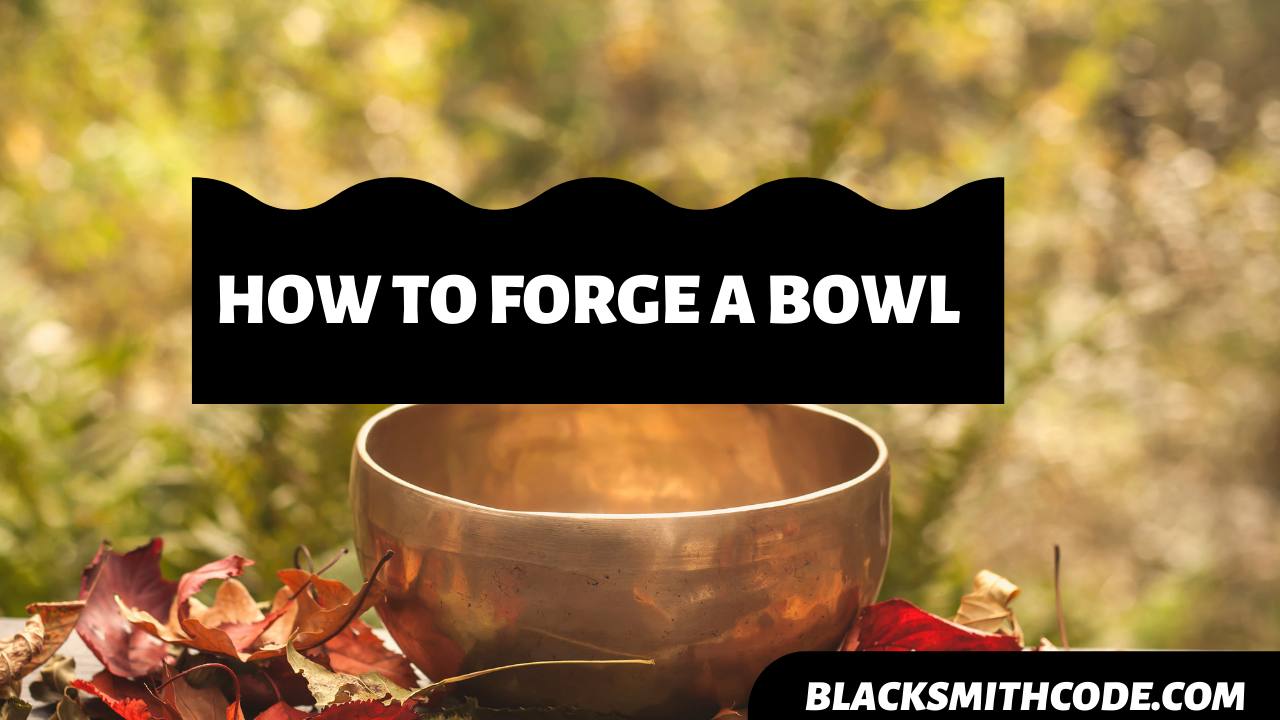Do you wish to add forging a product of high commercial value to your box of knowledge? Then, you should learn how to forge a steel bowl. A steel bowl is of high commercial value and domestic use.
A beautiful contemporary steel plate is a beautiful piece that can make a real statement when you give them to your loved ones. Using traditional hammering and forging techniques makes it even more priceless.
Another special thing with forging a steel bowl is that no two bowls can look exactly alike. The uniqueness of each steel bowl you forge can define its value.
The forging process of a bowl is not tedious relative to its value. However, you need a high level of precision and technicality to have your desired result. Also, repeated practice will make you get better and become an expert in no time.
However, you would only be lucky to have a perfect result on the first try. In case you don’t, there is nothing to worry about.
The steps below aim to help you through the process of forging a bowl without stress. It will also help you through having a near-perfect result even on the first try.
Essentials
The essentials that are needed for the forging process of a bowl include;
Forge
Instructions to How to Forge a Bowl
Step 1: Choose a Suitable Material
The materials that you choose for forging a bowl can go a long way in determining the needed input and your eventual result. Here, it is best to use a flat rounded steel. The diameter of the steel you would use is dependent on the size of the bowl you want to create.
Once you have flat rounded steel of the desired diameter, then the rest is easy, in case all you have is flat steel, you might unavoidably have to go through the stress of cutting out a round shape from the stock.
Step 2: Heating
Place the round steel in the forge and heat it till it reaches a suitable temperature. Once this is achieved, you can then retrieve the material from the forge for further processing.
Step 3: Hammering and Forming
This step aims at giving the bowl a precise shape. You might need a heavy-weight hammer to help you land effective blows. The hammering process is where the technicality and creativity come in.
You either use mechanical hammering or manual hammering. It all depends on the one you have around and the one you know how to use best.
Quick Steps
- Start by hammering the edges of the round steel inwardly. To achieve this, you can hold one side of the plate with the tong and slightly raise it to permit the inward blows.
- Alternate the position of the tong as you hammer round. Also, it is crucial to ensure that each blow is strong enough to leave an impact on steel.
- You need the steel to be at the maximum temperature all through the hammering process. Therefore, you should reheat it as often as required.
- Continue hammering till it conforms to the shape you want. Paying attention to the hammering technique is crucial because you are not just hammering flat; you are trying to curve the plate to give a bowl shape.
- You should also be aware that the hammering process can take a little time and be rigorous. Just keep up with the tempo until you have your desired shape.
- Stop the hammering when you have a suitable shape.
- Let the bowl cool down without quenching it.
Step 4: Grinding
If you get your hammering right, you should have steel in the bowl shape by now. So, it is one of the most essential steps while forging a bowl. However, you don’t expect the edges of the bowl to be smooth or regular, and that’s why the grinding process is essential.
Pro Tip
Use a suitable grinding technique to smooth the edges and make it regular. You can use a grinder and perfect it with a portable hand file. You should also smooth the outer and inner parts of the bowl.
Step 5: Finishing
At the end of step 4, you should already have a steel bowl. However, the finishing touches you are adding aims at improving the outlook of your work. You can add extra designs to suit your taste.
The finishing you give your bowl can increase its market and commercial value.
FAQs on How to Forge a Bowl
Question
Can I forge a bowl with Copper?
Yes, you can forge a bowl with other varieties of materials, including brass and bronze. However, the outlook of each type of bowl would be different depending on the material you use. Likewise, the forging technique will also vary, depending on the properties of the material.
Question
What are the uses of steel bowls?
Steel bowls are highly commercial for a reason. Aside from the fact that that steel bowl can serve as a valuable gift for loved ones, it can also be useful for decorating purposes. Likewise, a steel bowl can be useful for the storage of small materials like needles and pins.
Question
Can I forge a bowl from a domestic steel sheet?
The concise answer is yes. You can forge a bowl from any type of steel as long as it is of good quality and considerable thickness.
It would even work better if it is a rounded steel sheet. But if the steel is only flat, you can cut out the rounded shape from the stock to ease the stress involved in the forging process.
Video on How to Forge a Bowl
Warnings
It is crucial to be conscious of your safety and the quality of your product while forging a steel bowl. Taking the necessary precautions will not only guarantee your safety, but it will also improve the quality of your product.
- Do not handle the steel with your bare hands to avoid burns. Handle them with tongs and ensure the use of protective gloves.
- Use heavy-weight hammer to reduce the stress and fatigue of rigorous hammering.
- Ensure proper ventilation of your workplace and follow other blacksmithing safety rules.





